Eraser, Kneaded Eraser
消しゴム・練り消しゴム
Keshigomu・Nerikeshigomu
CATEGORIES
Erasers and kneaded erasers are deletion tools we use to correct or change lines, etc., drawn by pencil or other writing instrument.
Plastic erasers, which are also used for general writing purposes, are in springy block shape and can erase text by exerting and releasing pressure. They are produced by adding a phthalate compound as a plasticizing agent to the principal base material, polyvinyl chloride. Kneaded erasers have a clay-like consistency which can be molded into any shape. Since it possesses slightly lower erasing properties, it can be used for delicately erasing lines, etc. These are produced with a combination of butyl rubber as the raw material and factice, calcium carbonate and a phthalate compound, etc.
Plastic erasers are typically used in pencil drafting and are mainly used for clean, thorough erasing of lines. The corners and edges of erasers can be used for erasing while leaving the clear contours of a shape and for producing sharp rectilinear outlines (bringing out the whiteness of the paper) on a pattern. When the corners become rounded, the edges can be revived by trimming them with some type of cutter. Kneaded erasers are mainly used for subtle changes and adjusting contrast. They can be lightly kneaded, flattened and pressed against the surface, or stretched into a cylinder shape and rolled over the surface. It is also possible to use the sides of a flattened eraser or the tips of a cone shape to make delicate changes and produce line drawings using rectilinear outlines to create shapes and convey various expressions. neaded erasers can also be used for charcoal drawings but care needs to be taken because they can more easily damage the surface of charcoal paper than bread.
Erasing materials have been necessary since the dawn of the pencil and at that time, items such as wheat bread were used. The English chemist, Joseph Priestley, discovered the ability of natural rubber to erase pencil marks in 1770. A commercial product was sold two years later and its use spread throughout Europe. In Japan, the demand for erasers increased with the popularity of the pencil and, initially, imported products were used. However, domestically-produced erasers appeared in 1886. Research continued in Japan and in 1959, it produced the world’s first plastic eraser like the one that exists today.
Erasers can become coated in black lead and soil drawing surfaces so they should be used only when clean. Likewise, kneaded erasers become sticky if held in the hand for extended periods and contaminated by sweat and oils which cause blemishes when used. All kinds of erasers can be purchased at art supply and stationery stores.
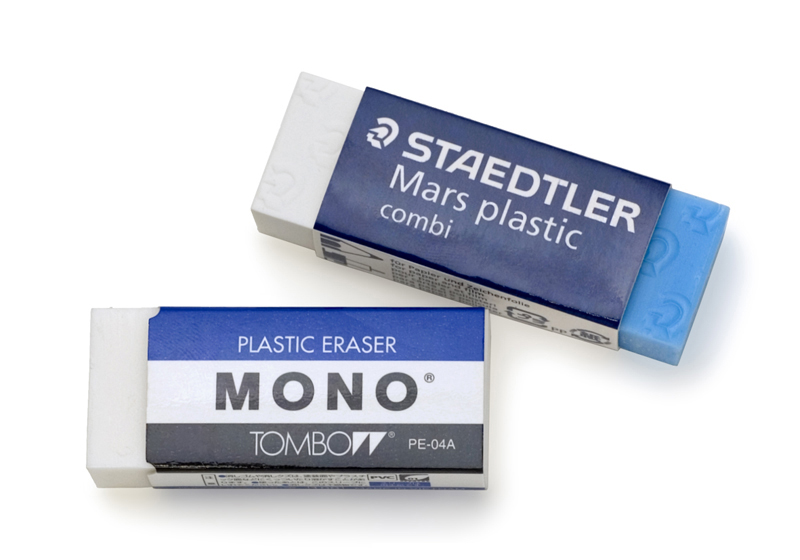 Plastic erasers
Plastic erasers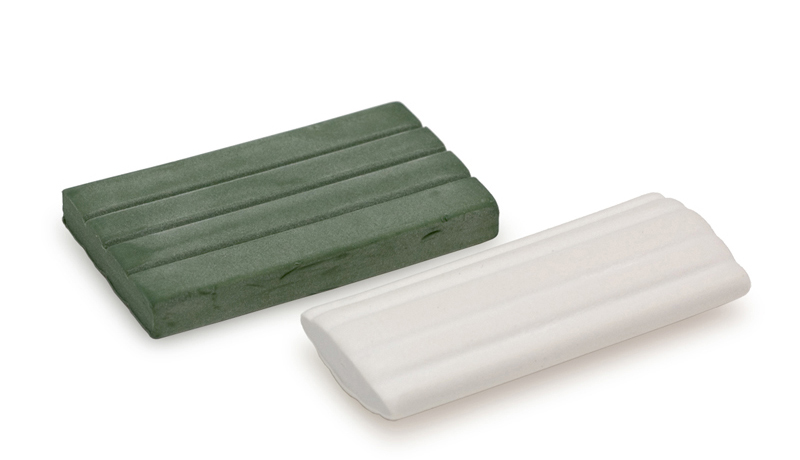 Kneaded erasers
Kneaded erasers- Examples on Sunflower M paper
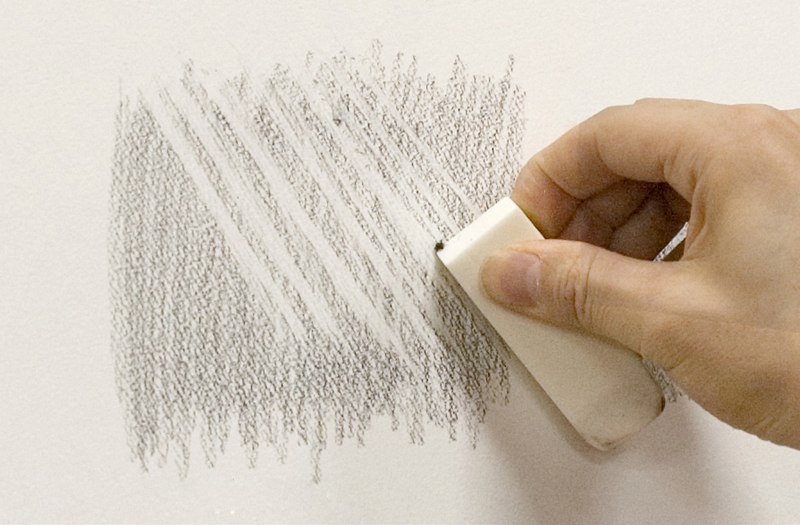 Making lines with an eraser
Making lines with an eraser 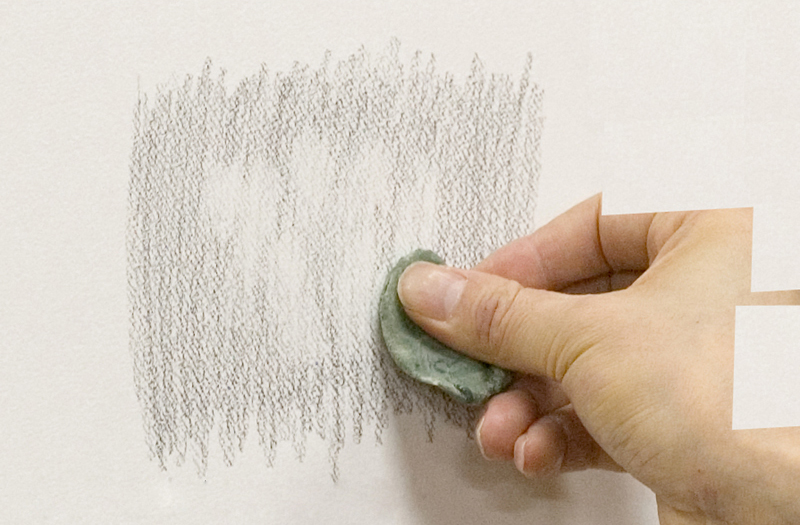 Making white areas with a kneaded eraser
Making white areas with a kneaded eraser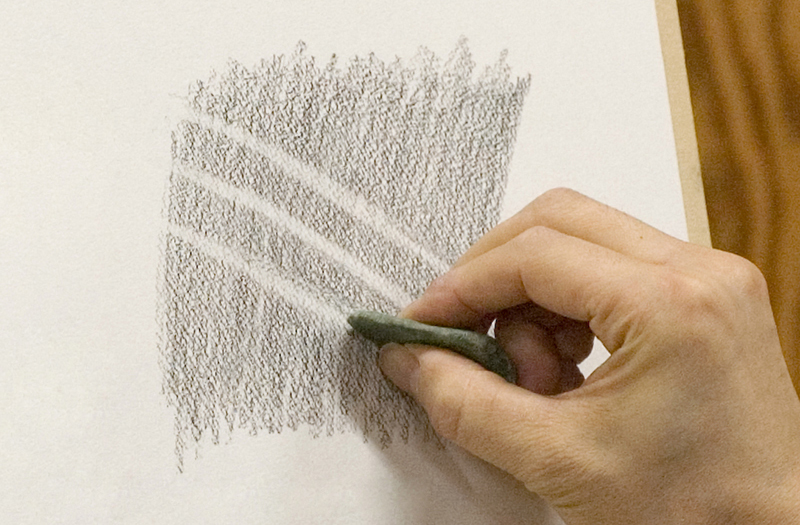 Making lines with a kneaded eraser
Making lines with a kneaded eraser Sharpening an edge with an eraser
Sharpening an edge with an eraser- Artists mold kneaded erasers into various shapes for different applications
 Flattening the eraser
Flattening the eraser  Making the eraser into a stick
Making the eraser into a stick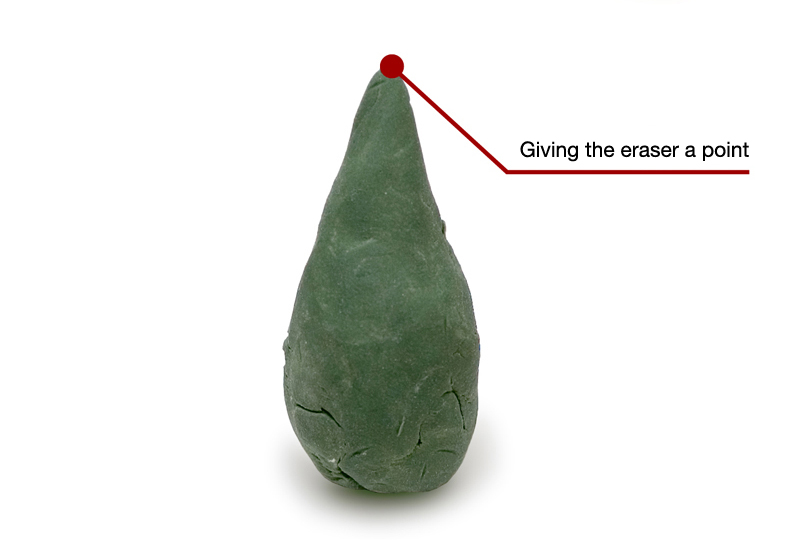 Giving the eraser a point
Giving the eraser a point
